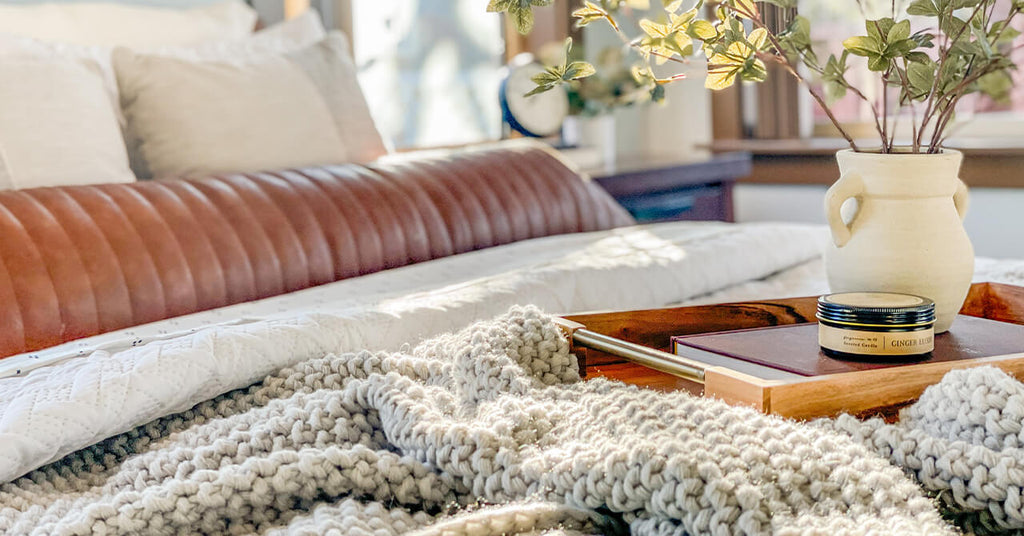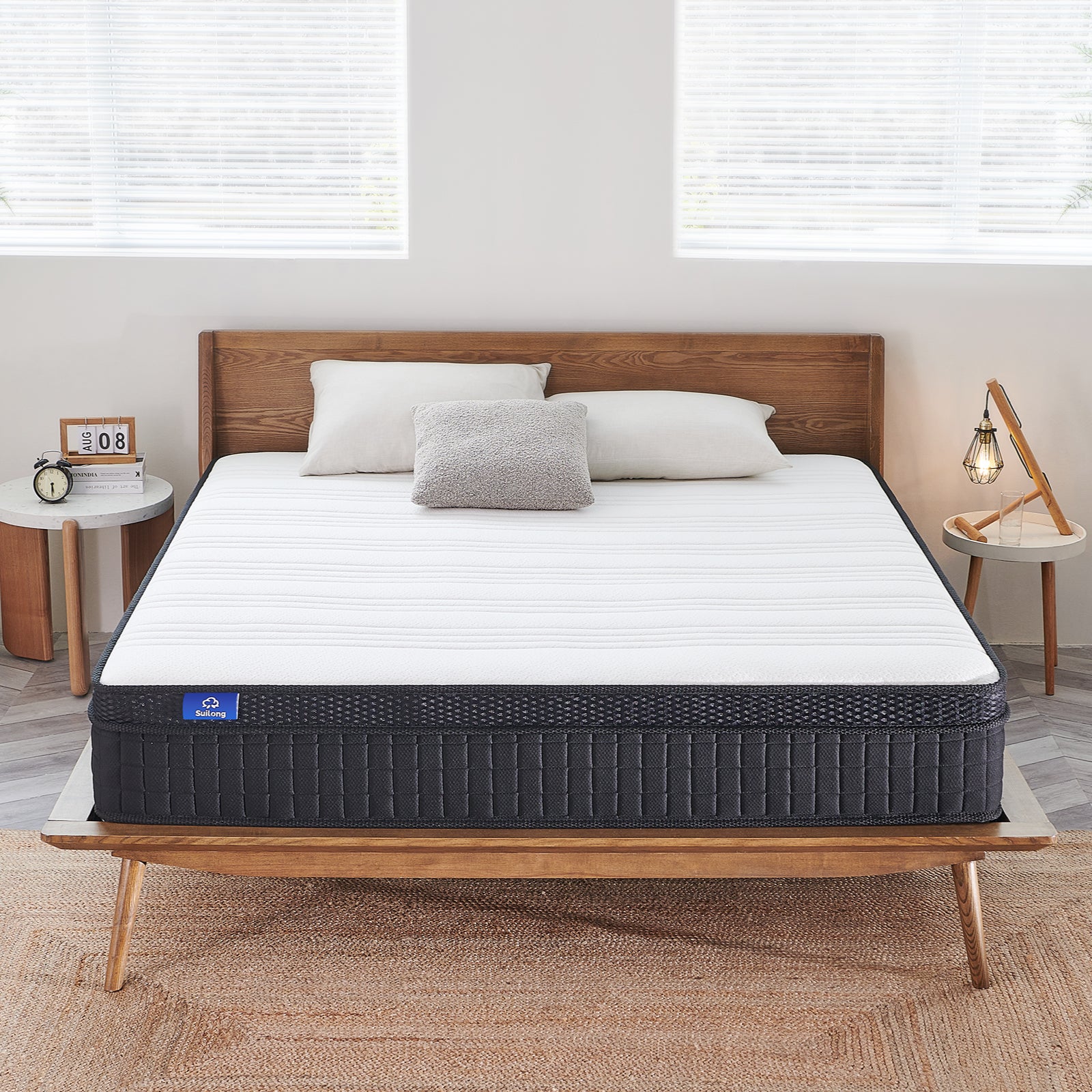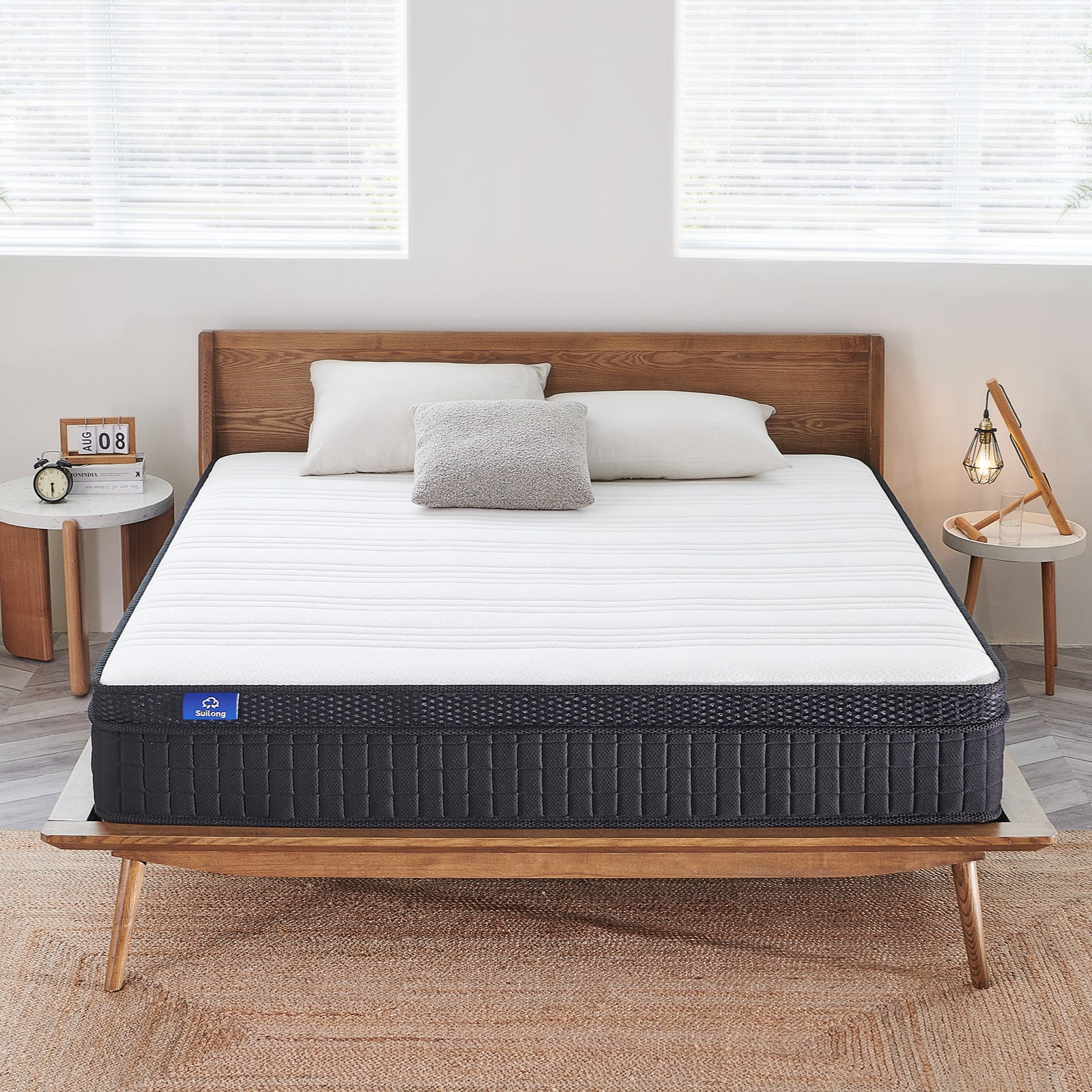What's The Life Span Of A Memory Foam Mattress?

Dear readers, are you longing to discover the mysteries of a mattress that will let you sleep through the night? Well, here's the good news! In this article, we will take you on a deep dive into everything you need to know about memory foam mattresses so that you can say goodbye to sleeplessness from now on! Let's start this cozy journey!
1. The basics of a memory foam mattress and its lifespan
1.1 Structure and characteristics of memory foam mattresses
Introduction of material and technology
In the world of mattresses, memory foam mattress is undoubtedly a revolutionary existence. It is made of a polymer called polyurethane, which has excellent deformation and resilience. Memory foam adjusts its own shape according to your body's temperature and weight, fitting every inch of your body and providing you with personalized support.
Differences from other types of mattresses
Compared to traditional innerspring mattresses, memory foam mattresses are able to better distribute the pressure on your body and reduce vibration and noise when you turn around. This not only reduces the pressure points on your body, but also ensures that your deep sleep is not disturbed.
1.2 General Shelf Life
General shelf life in the market
The general shelf life of a memory foam mattress is 8 to 10 years. During this time, it maintains good elasticity and support to provide you with continued comfort.
How to extend the service life
- Choose the right bed frame: a bed frame will provide the support your mattress needs and extend its life.
- Turn it regularly: Turning your mattress every few months will extend its life.
- Avoid excessive pressure: try to avoid jumping or applying excessive pressure on your mattress to prevent premature aging.
Now, can't you wait to try out your new memory foam mattress? Don't worry, we have more knowledge and advice waiting for you! Keep exploring down the page and start your journey to a comfortable night's sleep!

2. Timing and Signs to Replace Your Memory Foam Mattress
When to consider a new mattress
Significant discomfort and loss of sleep quality
Do you often wake up in the morning with a sore back? Or do you feel tired in the morning even though you've been "sleeping" all night? This could be an "SOS" signal from your mattress. When a mattress ages or no longer fits you properly, it may no longer provide enough support and comfort, resulting in a poorer quality of sleep.
Warnings of physical deformation of the mattress
Take out a ruler and measure the height and width of your mattress. You may notice that it's sunken in the center, or that the edges are no longer flat. These are obvious signs of warping and signals that you need to consider replacing your mattress.
Early signs of a deteriorating mattress
Odors and allergic reactions
Have you noticed an indescribable odor in your mattress lately? Or have you started to experience allergic reactions such as sneezing, runny nose or itchy skin? These may be due to dust mites, mold and other allergens that have accumulated inside the mattress.
Noticeable Depression or Unevenness
In addition to measuring with a ruler, you can also feel the surface of the mattress with your hands. If you notice that one part is significantly lower than the rest, or if you feel lumps inside the mattress, then these are signs of an aging mattress.
Okay, so now you know how to tell if your memory foam mattress needs to be replaced and how to spot the signs of mattress aging in advance. But remember, mattress selection and replacement is an important decision that is all about your health and comfort. Therefore, I highly recommend that you do a little more research before making a decision, especially about the Suilong Nimbus 12 Inch Hybrid Mattress, which could be the perfect mattress you're looking for. Don't let a bad mattress ruin your precious sleep, take action now!

Suilong Nimbus
12 Inch Hybrid Mattress
Look no further than the Suilong Nimbus 12-inch Hybrid Mattress.
Buy Now3. Memory Foam Mattress Care and Maintenance
After purchasing a high-quality memory foam mattress, I knew that proper maintenance and care would be essential if I wanted it to stay with me for a longer period of time. Below, I will share with you a series of methods and suggestions on mattress maintenance and care.
3.1 Ways to Prevent Mattress Denting and Deformation
When using a memory foam mattress, I deeply appreciate the importance of preventing mattress denting and deformation. I realized that it not only enhances the quality of sleep, but also effectively extends the life of the mattress. Below, I will reveal to you some of the methods I have explored and practiced.
Flipping and rotating the mattress
- Flip your mattress regularly
I flip my mattress up and down every three months to ensure even wear and tear and reduce the risk of denting.
- Rotate the mattress
Similarly, I also rotate my mattress 180 degrees every so often, which prevents dents that can occur due to prolonged pressure in one area.
Choosing the right bed frame
- Choosing the right bed frame
I make it a point to purchase a bed frame with sturdy support to ensure that the mattress is adequately supported, thus preventing dents in the center.
- Regularly check the bed frame
In addition, I regularly check the firmness of the bed frame to ensure that it provides long-lasting and stable support.
3.2 Maintaining Mattress Comfort and Extending Service Life
In using a memory foam mattress, I know that keeping the mattress comfortable and extending its service life is a learning process. Next, I will share some of my practical experience and tips.
Regular Cleaning and Maintenance
- Clean the surface of the mattress
I vacuum clean the mattress surface weekly to remove dust and fine stains.
- Avoid liquid penetration
I try to avoid drinking or eating in bed to prevent liquid penetration inside the mattress.
Proper temperature and humidity control
- Room Ventilation
I will open the windows regularly to keep the air in the room fresh and also to prevent the mattress from mold and mildew due to moisture.
- Moderate Temperature
I will also pay attention to controlling the temperature of the room and try to avoid exposing the mattress to too high or too low a temperature in order to maintain the stability and comfort of its material.
With the above maintenance and care, I have managed to extend the life of my memory foam mattress while maintaining its comfort and support, providing me with a comfortable and healthy sleeping environment every night. I am sure that if you follow these methods as well, you will be able to make your mattress last longer and your sleep more comfortable.

4. Solutions to common memory foam mattress problems
In the process of using memory foam mattress, we may encounter some common problems, such as mattress depression or shape change. Fortunately, there are some effective solutions that can help us solve these problems. Below, I will show you how to recognize and solve these problems.
4.1 Solve Mattress Depression Problems
Mattress depression not only affects the quality of sleep, but also may cause various kinds of physical discomfort. In the following, I will discuss both the cause analysis and effective solutions in depth.
Cause analysis
- Excessive use and pressure accumulation: prolonged use and the effect of gravity will gradually compress and thin the materials in the mattress.
- Unsuitable bed frame: Using an unsuitable or low quality bed frame is also a common cause of mattress denting.
Effective solutions
- Regularly flip and rotate the mattress: Flipping and rotating the mattress every 3-6 months can evenly distribute pressure and prevent sinking.
- Choose the right bed frame: Buying a matching bed frame can better support the mattress and reduce the possibility of sinking.
- Use a mattress support board: If the mattress is already sunken, consider using a mattress support board to restore its original shape.
4.2 How to restore the original shape and comfort of a mattress
The shape and mattress comfort levels is an important factor that affects the quality of our sleep. So, how to restore the original shape and comfort of a mattress? I will answer this question from two aspects: the resilience property of sponge material and the practical tips to improve the resilience of mattress.
The rebound characteristics of sponge material
- Characteristics of the material itself: Memory foam has a certain rebound property and can return to its original shape after a period of time.
- Reasonable maintenance: By regularly turning and rotating the mattress, the mattress material can be better restored to its original shape.
Practical tips to improve the resilience of mattresses
- Moderate exposure to sunlight: Moderate exposure to sunlight restores the elasticity of the mattress and also helps to eliminate moisture and odors inside the mattress.
- Proper Cleaning and Maintenance: Avoid cleaning the mattress with too much water or chemical cleaners as this will preserve the internal material structure and resilience of the mattress.
- Use a mattress cover: A mattress cover protects the mattress from dust and stains and also increases the life of the mattress.
5. Disadvantages of memory foam mattresses and coping strategies
While enjoying the ultimate comfort and experience of a memory foam mattress, I also feel the need to face up to some of its shortcomings. At the same time, I am not just satisfied with pointing out these problems, but I have searched for and tried a variety of practical solutions, hoping to help you, like me, who want to improve your sleeping experience.
5.1 Common Disadvantages of Memory Foam Mattresses
Before I delve into solutions, I'd like to walk you through two of the most common drawbacks of memory foam mattresses: temperature sensitivity and price and weight issues.
Temperature Sensitivity
- Variation in firmness and softness due to temperature: I've noticed that mattresses become relatively firmer during the cold winter months and relatively softer during the hot summer months. This characteristic may affect the comfort and longevity of the mattress.
- Heat sensation persistence: I've also found that memory foam mattresses sometimes continue to emit body heat, making it more difficult to stay cool in the summer months.
Price and weight issues
- Higher price point: There's no denying that memory foam mattresses are usually a bit more expensive compared to other types of mattresses.
- Heavier weight: In addition, memory foam mattresses are also usually heavier than other mattresses, making them somewhat difficult to carry and clean.
5.2 Practical ways to mitigate the drawbacks
Instead of choosing to give up in the face of these problems, I tried to find solutions to better enjoy the superior experience that memory foam mattresses offer. Here are some of the ways I explored, hopefully they can help you.
Adjust the room temperature
- Maintain a constant temperature environment: In order to minimize variations in mattress firmness, I try to create a constant temperature environment in my bedroom to avoid significant firmness changes due to temperature fluctuations.
- Choose the right bedding: I have also found that using bedding that can regulate the temperature, such as cool-sensitive sheets or breathable bedding, can effectively minimize the heat nuisance associated with memory foam mattresses.
Choose the right mattress thickness and density
- Purchase according to personal preference: I suggest that you can choose the right mattress thickness and density according to your personal comfort and budget to avoid unnecessary burden.
- Consider mattress handling and maintenance: At the same time, I have started to pay more attention to mattress handling and maintenance, choosing brands that are lighter or provide professional services to minimize the difficulty of handling and cleaning.
Through this practice and exploration, I deeply feel that although memory foam mattresses have their non-negligible shortcomings, through some practical and effective methods, we can still greatly reduce the troubles brought by these problems, so as to better enjoy the comfort and convenience it brings. I hope my sharing can inspire and help you.
FAQs
Q1: What is the typical lifespan of a memory foam mattress?
A1: A memory foam mattress generally lasts about 8 to 10 years with proper care. However, the lifespan can vary depending on the quality of the mattress and how it's used. It's best to assess the comfort and support of your mattress regularly to determine if it's time for a replacement.
Q2: How can I identify signs that indicate my memory foam mattress needs replacing?
A2: You might consider replacing your memory foam mattress if you notice signs like significant sagging, lumps, or persistent discomfort during sleep. Another clear indication is if the mattress no longer returns to its original shape and lacks the support it once provided.
Q3: Can a sunken memory foam mattress be repaired, and how?
A3: Yes, minor sags in a memory foam mattress can sometimes be fixed. You can try rotating the mattress, using a mattress topper to provide additional support, or placing a piece of plywood under the mattress to prevent sagging. However, if the mattress has significant indentations, it might be best to consider a replacement.
Q4: Is there a way to prevent my memory foam mattress from sagging in the middle?
A4: To prevent your memory foam mattress from sagging in the middle, ensure that it is supported by a sturdy bed frame. Additionally, regularly rotating the mattress can help distribute wear evenly. Moreover, try to avoid putting excessive weight on the middle portion of the mattress to prevent premature sagging.
Q5: What strategies can help in restoring the firmness of a memory foam mattress?
A5: To restore the firmness of a memory foam mattress, you might consider using a firm mattress topper, placing the mattress on a solid foundation, or flipping it if it's double-sided. Additionally, maintaining a cooler room temperature can sometimes help, as memory foam tends to soften in warm temperatures. If these strategies don't work, it might be an indication that it's time to replace your mattress.
-
Posted in
Buyer's Guide, Lifestyle, Mattress Buying Guide, Mattress Tips, memory foam mattress Advantages, Memory Foam Mattress Benefits, What Is a Memory Foam Mattress?

















